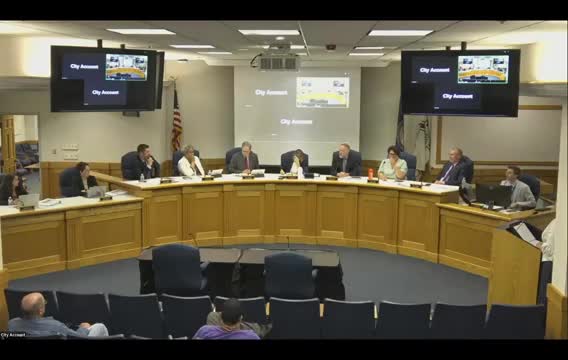Stanton City Council considers tax rate increase for essential infrastructure funding
April 27, 2025 | Staunton City, Virginia
This article was created by AI summarizing key points discussed. AI makes mistakes, so for full details and context, please refer to the video of the full meeting. Please report any errors so we can fix them. Report an error »

During the recent Staunton City Council meeting held on April 24, 2025, significant discussions centered around the city’s pressing infrastructure needs and the implications of potential tax increases. With an estimated $134 million in unfunded capital projects, including critical infrastructure like the North River water pipeline, council members expressed urgency in addressing these financial challenges while balancing the needs of the community.
Council members highlighted the importance of funding basic infrastructure, which has been deferred for too long. The proposed design costs for necessary repairs, particularly around the wharf area, were noted to be around $360,000. This figure is part of a broader conversation about the city’s financial health and the need for responsible budgeting. The city manager confirmed that funds for the design would be sourced from the stormwater fund, aided by recent increases in stormwater rates.
A key point of contention was the potential increase in the real estate tax rate. Currently, Staunton's property tax rate is among the lowest in the region, but council members acknowledged that raising taxes could place additional burdens on residents, particularly those who are already financially constrained. Approximately 46% of Staunton's population falls into the "Asset Limited, Income Constrained, Employed" (ALICE) category, indicating a significant portion of the community struggles to afford basic necessities.
In light of these challenges, some council members proposed a modest tax increase of one cent, while others suggested a more cautious approach, advocating for a 90-cent rate instead of a more substantial increase. This proposal aims to spread the financial burden over time, allowing for necessary investments in infrastructure without overwhelming residents.
The discussions underscored the council's commitment to maintaining affordability in housing and services while ensuring that essential infrastructure is not neglected. As the city navigates these complex financial decisions, the council remains focused on balancing fiscal responsibility with the needs of its most vulnerable citizens. The outcome of these discussions will shape the city’s budget and priorities in the coming year, with further deliberations expected as the council seeks to finalize its approach to funding and taxation.
Council members highlighted the importance of funding basic infrastructure, which has been deferred for too long. The proposed design costs for necessary repairs, particularly around the wharf area, were noted to be around $360,000. This figure is part of a broader conversation about the city’s financial health and the need for responsible budgeting. The city manager confirmed that funds for the design would be sourced from the stormwater fund, aided by recent increases in stormwater rates.
A key point of contention was the potential increase in the real estate tax rate. Currently, Staunton's property tax rate is among the lowest in the region, but council members acknowledged that raising taxes could place additional burdens on residents, particularly those who are already financially constrained. Approximately 46% of Staunton's population falls into the "Asset Limited, Income Constrained, Employed" (ALICE) category, indicating a significant portion of the community struggles to afford basic necessities.
In light of these challenges, some council members proposed a modest tax increase of one cent, while others suggested a more cautious approach, advocating for a 90-cent rate instead of a more substantial increase. This proposal aims to spread the financial burden over time, allowing for necessary investments in infrastructure without overwhelming residents.
The discussions underscored the council's commitment to maintaining affordability in housing and services while ensuring that essential infrastructure is not neglected. As the city navigates these complex financial decisions, the council remains focused on balancing fiscal responsibility with the needs of its most vulnerable citizens. The outcome of these discussions will shape the city’s budget and priorities in the coming year, with further deliberations expected as the council seeks to finalize its approach to funding and taxation.
View full meeting
This article is based on a recent meeting—watch the full video and explore the complete transcript for deeper insights into the discussion.
View full meeting
